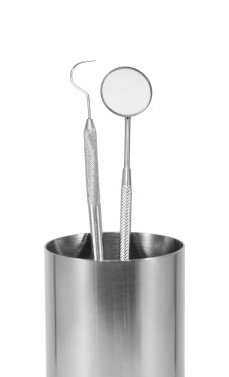PRINTED IN TCI WEEKLY NEWS
March 23rd, 2013

Dental Issues in Older Patients
There are a number of specific dental issues that I see associated with my older patients. Some are of a cosmetic nature, so whilst not necessarily significant from a medical perspective might be a concern for the patient on an aesthetic level; others are more are related to increased difficulty in treating dental disease which has both aesthetic and medical implications.
Cosmetic
As teeth age, a number of things occur that make the teeth look duller and darker in colour than younger teeth. The nerve/pulp chamber in the center of the tooth naturally gets smaller so the tooth becomes more solid dentine, resulting in a darker colour. Added to this, the normal wear and tear on the teeth over time causes the glass-like surface (enamel) layer of the teeth to have tiny micro-fractures that scatter light when it is reflected off the tooth. (Imagine clear glass that has many fine scratches on it, compromising its clarity and giving a duller, slightly opaque appearance). The combination of both these factors results in duller, less white teeth.
This can be a cosmetic problem if you had a crown or filling done when younger and this now does not match the surrounding natural teeth. It may be possible with bleaching to alter the underlying colour of the natural teeth but this will not change the lack of shine. A solution for some patients is porcelain veneers or crowns to re-create a more youthful smile. With the loss of skin elasticity as you age, the upper lip becomes longer and you show less tooth when you smile- especially if there has been some tooth wear. If new veneers or crowns are made then a slight increase in length can do wonders for a smile. Botox and facial fillers around the lip, cheek and chin areas can also be used alongside this type of dental work to improve the general youthfulness of the smile.

Dental Disease
A particular problem seen in aging dentition is root caries (root decay). A history of gum disease can mean an increased chance of gum recession (the gums moving away from the teeth) and this can result in new decay starting on the root surface. This can move very rapidly as the decay is directly onto the dentine of the root surface and does not have to pass through the hard protective enamel layer first. Also, if decay starts on the root surface the distance to the nerve chamber on the inside of the tooth is much shorter, so a small cavity can reach the nerve remarkably quickly; regular dental examinations and if necessary radiographs (x-rays) are needed to monitor these problems.
Collapse of Occlusion (Bite)
As you age several things in your body become more brittle and this includes your teeth. I see patients where there has been a steady progressive loss of teeth over the years until they may be left relying on just one or two teeth with which to chew. If there is a failure of one of these key teeth then the patient can quite suddenly fine that there is poor contact between the upper and lower jaws. This causes difficulty in eating and puts strain on the jaw joint, which can result in pain. Selective replacement of missing teeth with implants, bridges or dentures can help prevent this problem before it becomes a major reconstruction project.